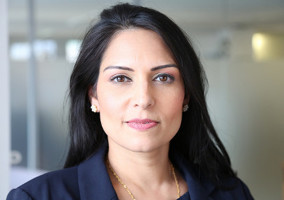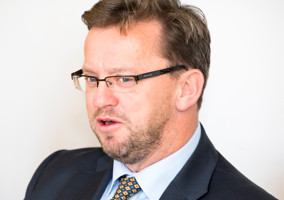Chris Wright, chief executive of Catch22, responds to criticism about large charities' relationships with smaller ones and sets out how his charity sets out to work collaboratively with others.
These past few weeks we have been exposed to media focusing on the lack of support for small charities and how these organisations are being shut-out and used as ‘bid candy’ by big charities. William Shawcross, chair of the Charity Commission, said in a public speech the other week that small charities were often “eclipsed by the big brand organisations”.
This is clearly a problem, and not something that I am denying, but where’s the argument for how big charities can be supporting the smaller ones in the right ways? How can it be done really well and how can big charities lead the way in creating a culture of collaboration?
Catch22 is a large charity, a social business, that is to say that we have the heart of a charity and the mind-set of a business. We deliver public services right across social welfare, from children’s social care and alternative provision education, to youth justice and apprenticeships.
We bid for contracts, we deliver services designed to build resilience and aspiration in individuals and communities. We have adaptability, an ability to work across sectors and a willingness to draw from what works in the public, private and voluntary sectors. Central to all of this is collaboration.
Our responsibility as a large charity
As a large charity we believe we have a responsibility. Where we have the scale and capacity, we should be at the forefront of transforming the landscape and enabling change.
It’s not just about money and contracts, it’s also about collaborating and being creative. If we all believe in a good society, we should be using our assets and networks for the ‘greater good’.
Sometimes that might mean stepping back from the spotlight and into a more supportive role – nurturing or building a platform for others who share our vision but perhaps not our resources.
Smaller scale charities, for example, might have great ideas and scalable models but lack the capacity to bid competitively, or lack the networks and resources to be seen and heard in the right places. They should not be left to sink or swim. Sometimes they just need a ‘leg-up’.
Working together
The Owen Jarvis and Ruth Marvel Clore Social Leadership 2013 report, When Bees Meet Trees epitomises this way of thinking. Large and small social sector organisations need each other to thrive.
‘Bees and trees’ each play important roles that the other can’t. Collaboration helps build on their respective strengths and compensate for their weaknesses – the larger organisation strong in methods, management and scale, the smaller organisations energetic and flexible in generating new opportunities.
If we all want the same thing, we should be figuring it out and finding solutions together. Society and the ‘social sector’ is becoming ever more fragmented.
But there is so much potential and capability if we put our heads together. Together we have the opportunity to really challenge systems and affect far-reaching change.
Sure there will be compromises – ensuring that organisations maintain their own values and identity while collaborating with a partner (or so-called competitor) will be a challenge but surely this is better, more effective, than competing over the same piecemeal contracts to deliver small, separate parts of the whole.
It means government, charities, business and communities putting self-interest aside to work out how best we can build resilience and ambition in individuals, and deliver value for money services most effectively.
Examples of our collaboration
At Catch22 we have a strong history of collaboration, and are learning all the time. We are soon to launch a new Public Service Lab in Liverpool, working in partnership with Interserve and Big Society Capital – using our scale and balance sheet to help create capacity and sustainability for a range of great local voluntary organisations.
Using the scalable citizen services and back office functions of The Lab, local VCSEs will be able to compete with the big private sector players for important public service contracts. It will also encourage collaboration between VCSEs as well as nurturing innovation and creativity in tackling social challenges.
We see this as being truly collaborative, truly local and ultimately delivering better outcomes for the people and communities it reaches.
At the end of 2015, Catch22 acquired a small (but mighty) charity called Only Connect. Only Connect was on a journey to move away from unpredictable funding streams, and needed a ‘big brother’ to support it, financially and with expertise.
Only Connect didn’t want to merge. Catch22 didn’t want to merge. So we worked together to come up with a solution that represented a new type of relationship between larger and smaller charities, where the smaller organisation is able to learn and lean on the bigger organisation, and work to economies of scale while remaining independent. It’s not about being predatory, it’s about sustainability.
It’s the recognition that Catch22 has a responsibility to do whatever we can to reach that higher goal; a strong society.
We need more people and more organisations to step forward and show leadership, to protect and support others. Support doesn’t always have to be financial. There are lots of other ‘assets’ and ‘resources’ we can share: infrastructure, scale, networks, contracts, relationships, brand and credibility.
Catch22 last year incubated a new social enterprise called Unlocked Graduates, a Teach First style scheme to recruit the best and brightest into prison officer roles. This wasn’t about providing money, just a springboard for a great idea.
And, most recently, we partnered with Community Links. Community Links is a social action charity providing support and opportunities for over 5,000 people a year across London. At a time of challenge and opportunity for the sector, Catch22 and Community Links are trying to reimagine how partnerships could and should work. Local charities should be enabled to keep their identity and autonomy but to operate at scale through this kind of relationship, for the greater social good.
Showing leadership
Collaboration has many faces, from partnerships to incubation and leadership. I’m not claiming that it is easy, or that we have all the answers - we are certainly not the saviour of any sector or trying to brag. There are some real challenges but these examples I’ve just given you, we do these things because we believe in them. And we learn from them.
As a sector we need to understand and acknowledge the challenges that we are all facing, but also be able to think positively about what we can do in our own roles or organisations to support others to survive and flourish.
If we want to build a good society, we can’t do it alone, we need a collective vision, and a collective approach to leadership. We need to cast ego aside and build a platform for others to be heard.
We need to build capacity for others to deliver. So it’s on us – all of us – to show some generous leadership.
|
Related articles












